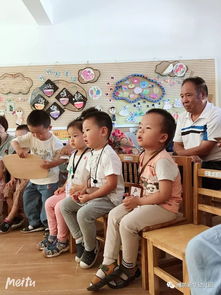文山舞蹈培训学校
Title: Choosing the Right Dance School for International Study
When it comes to pursuing a dance education abroad, selecting the right institution is crucial for your artistic and professional development. With numerous options available worldwide, it's essential to consider various factors to ensure you find the perfect fit. Here's a comprehensive guide to help you navigate the process of choosing the ideal dance school for your international studies:
1. Research and Define Your Goals:
Before exploring potential dance schools, take time to reflect on your aspirations and goals. What style of dance are you passionate about? Are you seeking a rigorous classical training or a more contemporary approach? Clarifying your objectives will help you narrow down your options and focus your search on institutions that align with your artistic vision.
2. Consider Dance Styles and Specializations:
Different dance schools may specialize in specific styles or disciplines. Whether it's ballet, contemporary, jazz, hiphop, or cultural dance forms, evaluate each institution's strengths and offerings in relation to your interests. Look for programs that provide comprehensive training in your preferred style while also allowing room for exploration and growth.
3. Evaluate Faculty and Curriculum:
The expertise and experience of the faculty play a significant role in shaping your dance education. Research the background of instructors at prospective schools, including their professional accomplishments, teaching philosophy, and approach to technique. Additionally, review the curriculum to ensure it covers a diverse range of subjects essential for your development as a dancer, such as technique classes, choreography, performance opportunities, and academic coursework.

4. Assess Facilities and Resources:
Inspect the facilities and resources available at each dance school to ensure they meet your needs. Consider factors such as studio space, performance venues, rehearsal rooms, costume shops, and access to supplementary resources like libraries and digital archives. Adequate facilities can enhance your learning experience and provide valuable support for your artistic endeavors.
5. Explore Alumni Success and Industry Connections:
Research the track record of alumni from each dance school to gauge its impact on graduates' careers. Look for evidence of alumni success in professional dance companies, productions, choreography, teaching positions, and other relevant fields. Additionally, consider the institution's connections to the dance industry, including guest artist residencies, networking opportunities, and internship placements, which can facilitate your transition into the professional sphere.
6. Consider Location and Cultural Experience:
The location of a dance school can greatly influence your overall experience as an international student. Consider factors such as proximity to cultural hubs, exposure to diverse artistic influences, opportunities for performances and collaborations, and the overall quality of life in the surrounding area. Immersing yourself in a vibrant and supportive dance community can enrich your education and broaden your horizons as a dancer and artist.
7. Review Admission Requirements and Financial Considerations:
Take note of the admission requirements and application process for each dance school, including audition procedures, portfolio submissions, academic prerequisites, and language proficiency standards for international students. Additionally, evaluate the cost of tuition, fees, housing, and living expenses, as well as the availability of scholarships, grants, and financial aid to make informed decisions about affordability and funding options.
8. Visit and Attend Auditions or Open Days:
Whenever possible, visit prospective dance schools in person to get a firsthand experience of the campus, facilities, and atmosphere. Attend auditions, open days, master classes, or workshops offered by the institution to interact with faculty, current students, and fellow applicants. These experiences will provide valuable insights into the school's culture, teaching methods, and community dynamics, helping you make a wellinformed decision.
Conclusion:
Choosing the right dance school for international study requires careful research, selfreflection, and consideration of various factors, including dance styles, faculty expertise, curriculum, facilities, alumni success, location, admission requirements, and financial considerations. By following these guidelines and prioritizing your artistic and professional goals, you can find a dance institution that nurtures your talent, fosters your growth, and prepares you for a successful career in the dynamic world of dance.
Remember, the journey of dance education is as much about personal growth and artistic exploration as it is about technical proficiency and professional advancement. Trust your instincts, follow your passion, and embrace the opportunities that lie ahead on your path to becoming a skilled and versatile dancer.
Best of luck in your pursuit of excellence in dance!











